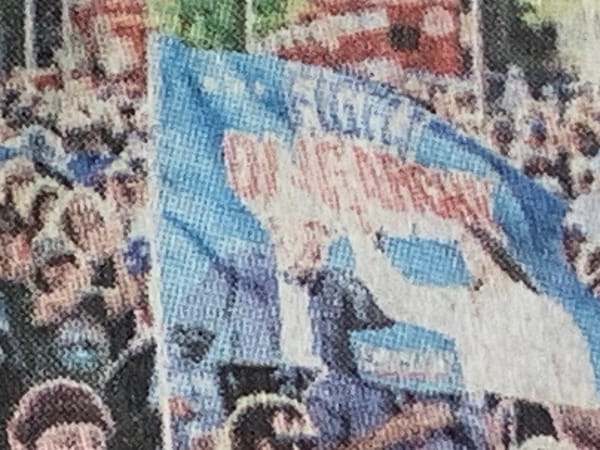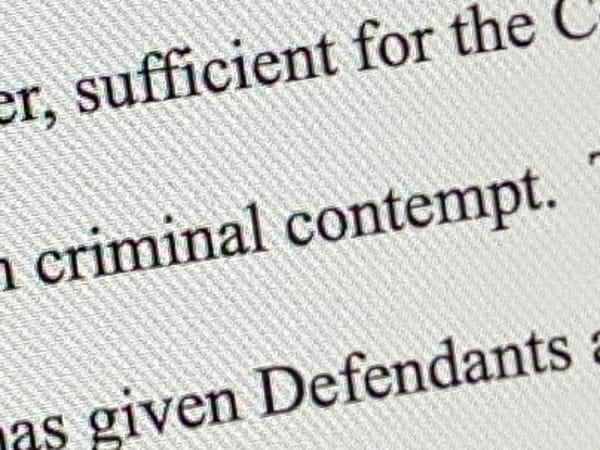On the trail of Le Pacte des Loups With Max Read
INDIGNITY VOL. 3, NO. 150
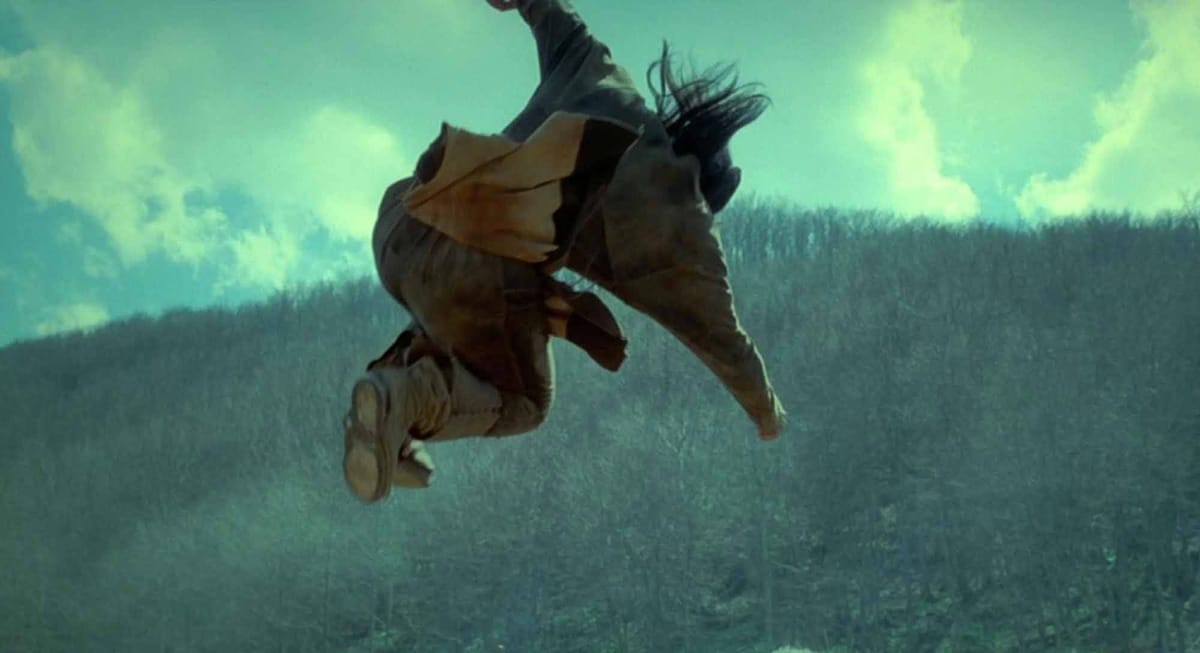
PACK JOURNALISM DEP'T.

Who Will Fistfight the Pope? A Discussion of Brotherhood of the Wolf (2001)
Tom Scocca, for Indignity: Greetings, Max Read of the Read Max newsletter! Because you are an expert appreciator of popular cinema, bizarre culture, and the lunette where those two things meet on the Venn diagram, I immediately let you know when I realized that the 2001 movie Le Pacte des Loups, aka Brotherhood of the Wolf, was viewable on streaming services—including on Kanopy, for free.
The last time I'd tried to watch the movie, I'd been dismayed to discover it was unavailable. I'd originally seen it via pirated DVD while living in Beijing in the mid-'00s, when the Chinese authorities still tacitly allowed, or didn't actively disallow, the distribution of unapproved movies through bootleg video stores. The selection in these shops was abundant yet erratic, a hodgepodge of various European countries' domestic cinema products, Hollywood blockbusters, Korean soap operas, Hong Kong action movies, indie documentaries—all sold cheaper than a video rental fee in the United States. Want a copy of Mr. 3000? Sure! How about the bilingual Canadian action-comedy Bon Cop, Bad Cop, in which a by-the-book Anglophone police detective from Ontario is forced to buddy up with a rulebreaking Quebecois? Why not?
Maybe nothing captured this anarchic spirit of possibility more, though, than seeing Le Pacte des Loups (after I'd watched the opening three minutes about 10 times in a row, trying to get the DVD's subtitle protocol to align with the caption controls on the all-region player we'd bought at the hypermarket). It had been a reasonably big hit in the U.S., for a French-language film, but I'd somehow entirely missed it. Now—what was it? A period costume drama, but also a kung-fu showcase, but also a monster movie, a political conspiracy thriller, a proto-steampunk design extravaganza...It was the only thing I'd ever seen that made a tricorn hat look cool: shedding streams of water in the middle of a downpour, perched on the lowered head of a staff-wielding Mark Dacascos, in the moment before the first of many, many, many spectacular ass-kickings begins to unfold.
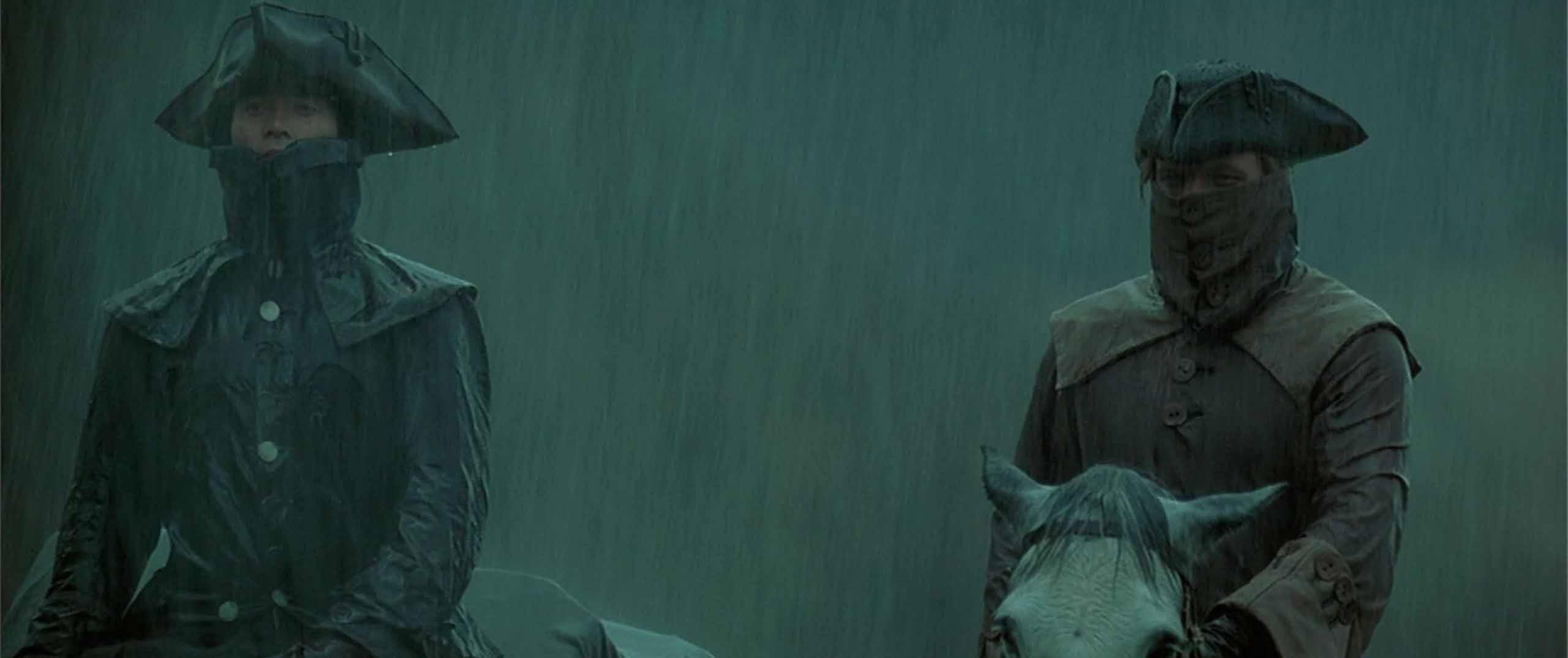
That rain-drenched fight scene was topmost in my mind when I popped the old disc into my Apple SuperDrive a year or two ago, ready to share it with the kids—only to see the machine gag on whatever zone restrictions and other permission violations it detected, refusing to even acknowledge the disc existed. Barely fazed, I went to look up the movie on streaming. And I couldn't find it anywhere. It had evidently been abandoned in that terrible near-horizon cultural dead zone, just old enough that nobody was bothering to license it to anyone. Bitterly cursing the false promises of the Long Tail and our ever-shrinking cultural heritage, I found something else to watch instead.
But then, during this past summer, I checked JustWatch and there it was, as if it had been there all along. It looked great, and the whole conceit remained as improbable as ever. What did you make of the movie when you saw it again? As an avid taxonomist, how did you even classify it? Torchlit halogencore? Eighteenth-century mecha horror with romantic elements? What makes it so bafflingly amazing, and why aren't there more of these?
Max Read, for Read Max: Tom, I was so happy when you texted me about this movie, which I hadn't thought about in a decade and hadn't seen in longer than that. I'm pretty sure I first saw Le Pacte des Loups on a fully legal DVD as an employee of the Princeton, N.J. location of West Coast video in the 2000s, but like you I remember it better as a pirated movie: In my memory its truest form was as two 700 MB DivX files with hard-coded subtitles that I'd torrented from the Pirate Bay at some point in college, kept on a Western Digital hard drive alongside other torrented DivX classics for watching when stoned (Troll 2; the bird documentary Winged Migration; a fairly large collection of cool music videos curated by a generous but anonymous enthusiast; etc.)
I detail the formats here both as a sop to Read Max subscribers still under the unfortunate impression that this is a "tech" newsletter and also to agree with you that, at least in my mind, what we might call the conceptual genius of Brotherhood of the Wolf—a kung-fu western supernatural mystery set in Enlightenment France, oh and by the way, it's horny too—seems inseparable from the post-internet, pre-streaming technological interregnum into which it emerged. Put another way, and to come around to answering your question about taxonomy, I think of Le Pacte des Loups as "Bootleg Cinema"—a particular kind of turn-of-the-millennium, cult-classic (to use a clichéd but period-appropriate phrase) mash-up, whose often cheap and stitched-together qualities are mirrored by its main channels of distribution: burned discs, fancams, and torrents.
Is this a real genre or just a tendentious attempt to rope together the otherwise disparate contents of my college CD binder and/or Western Digital hard drive? I suppose what I am describing here is the Ain't It Cool News canon—stuff like From Dusk Till Dawn or Bubba Ho-Tep or even Kill Bill, which I owned on a bootleg disc with hard-coded Chinese subtitles for some reason—and I suspect that most of the stuff I was collecting on torrent or bootleg via blog recommendation doesn't really hold up to post-college, mostly sober viewing on a grown-up TV. But as you say, Brotherhood—improbably!—does.
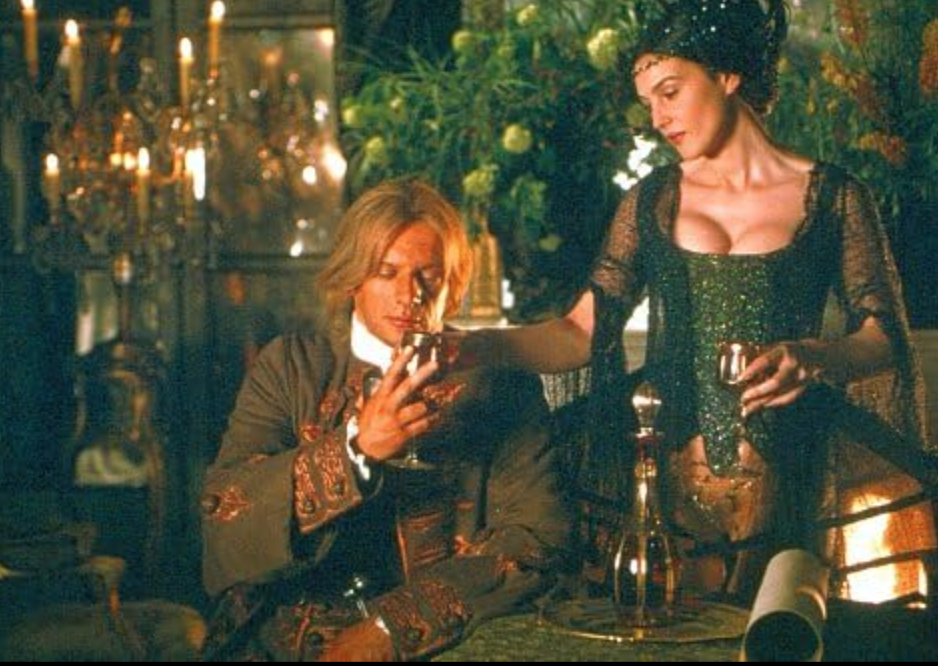
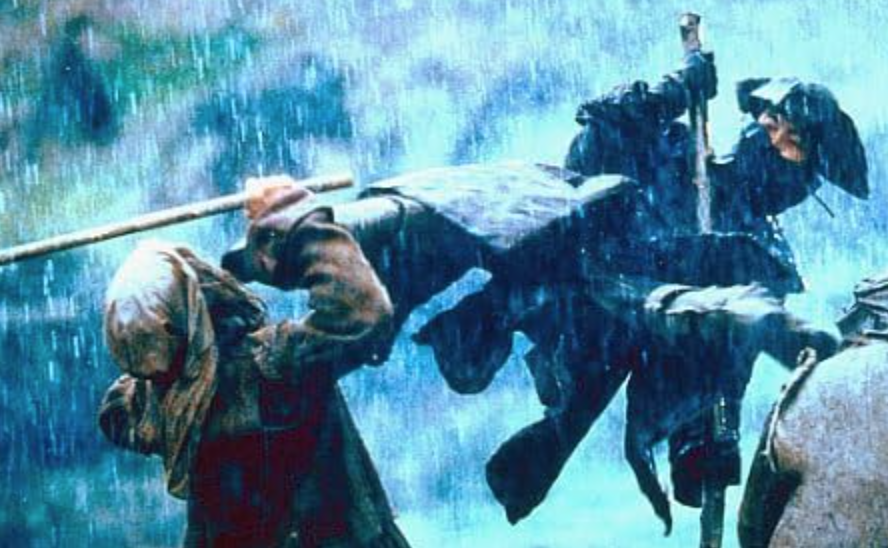







How? In a word: commitment. Everyone in this movie, above and below the line, is extremely committed to the material, on every level. By which I mean, the parts that are a martial-arts B-movie are committed to being a pretty good martial-arts B-movie; the parts that are a period conspiracy thriller and committed to being a pretty good period conspiracy thriller; the parts that are committed to being a supernatural mystery are committed to being a pretty good supernatural mystery. Maybe none of these strands quite rises to greatness on its own, but the fact that the filmmakers never seem to have been bored or taken shortcuts with any one part means you're never stuck waiting for the next fight scene (or fast-forwarding through a badly conceived fight scene).
I don't want to resort to crude national stereotypes, but it's hard for me to imagine this movie being made in America, at any time, with the same level of total, unembarrassed commitment to the material. The French have always been good at embracing corniness and silliness as acceptable cultural modes for adults. Other AICN-beloved Bootleg Cinema movies often had a kind of pathetic archness about them—the "Whedonesque" wink to the audience, the attempts to call attention to the filmmakers' cleverness that now infect every superhero movie.
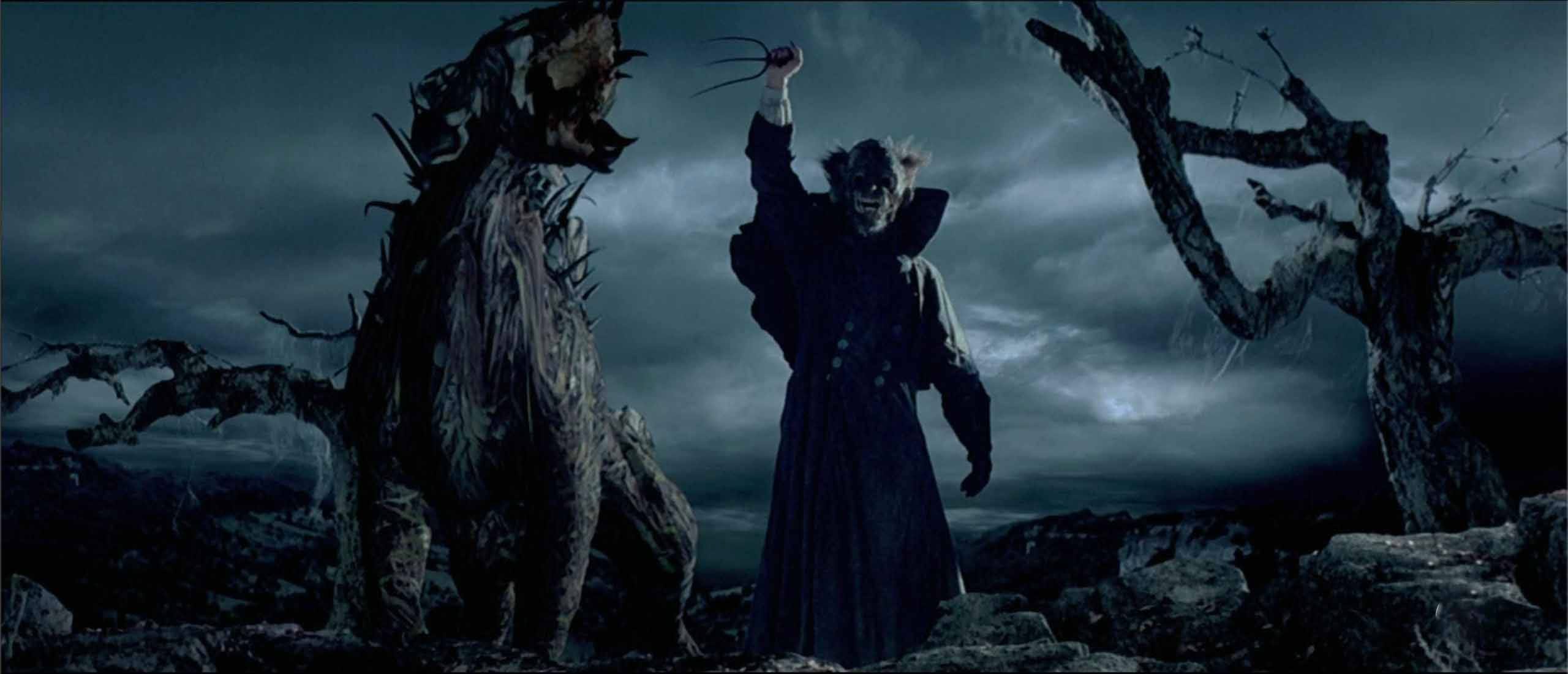
Of course, I don't mean to say that the filmmakers aren't "in on the joke," it's more that they know the "joke" (such as it is) is better if they play it straight. The early high-collared fight scene in the rain is probably the movie's most iconic moment, at least in the sense that it was the one I remembered best as well. For me, the most Brotherhood of the Wolf moment in Brotherhood of the Wolf is when the tracking shot of nude Monica Bellucci fades into an aerial shot of a snowy wilderness, her breast dissolving into a breast-shaped mountain. Pure cinema!!
What about you? Is there something more to this than the extremely French commitment of the filmmakers? What other flourishes stood out to you on re-watch?
Indignity: Era- and nationality-bound though the movie is—it's hard to imagine an American film circa 2023 successfully putting over the problématique casting of Dacascos, an Asian/Pacific American actor, as Mani, the protagonist's kung-fu fighting Iroquois comrade—there was something oddly, maybe accidentally, contemporary about watching it now. On top of all the other genres in the mix, the setup is basically a police procedural: The Chevalier Grégoire de Fronsac (Samuel Le Bihan), Royal Naturalist to the Court of Louis XV, has been sent to the County of Gévaudan to investigate a series of slayings, reputedly the work of some mysterious wolflike beast. As he and Mani take evidence from the crime scenes and interact with the locals, it becomes clear that there are hidden schemes afoot, dueling disinformation campaigns, the contagion of fear, a conspiracy between elites and a feral population of deplorables...It felt like a set of allusions to events, or just vibes, that hadn't even manifested back in 2001.
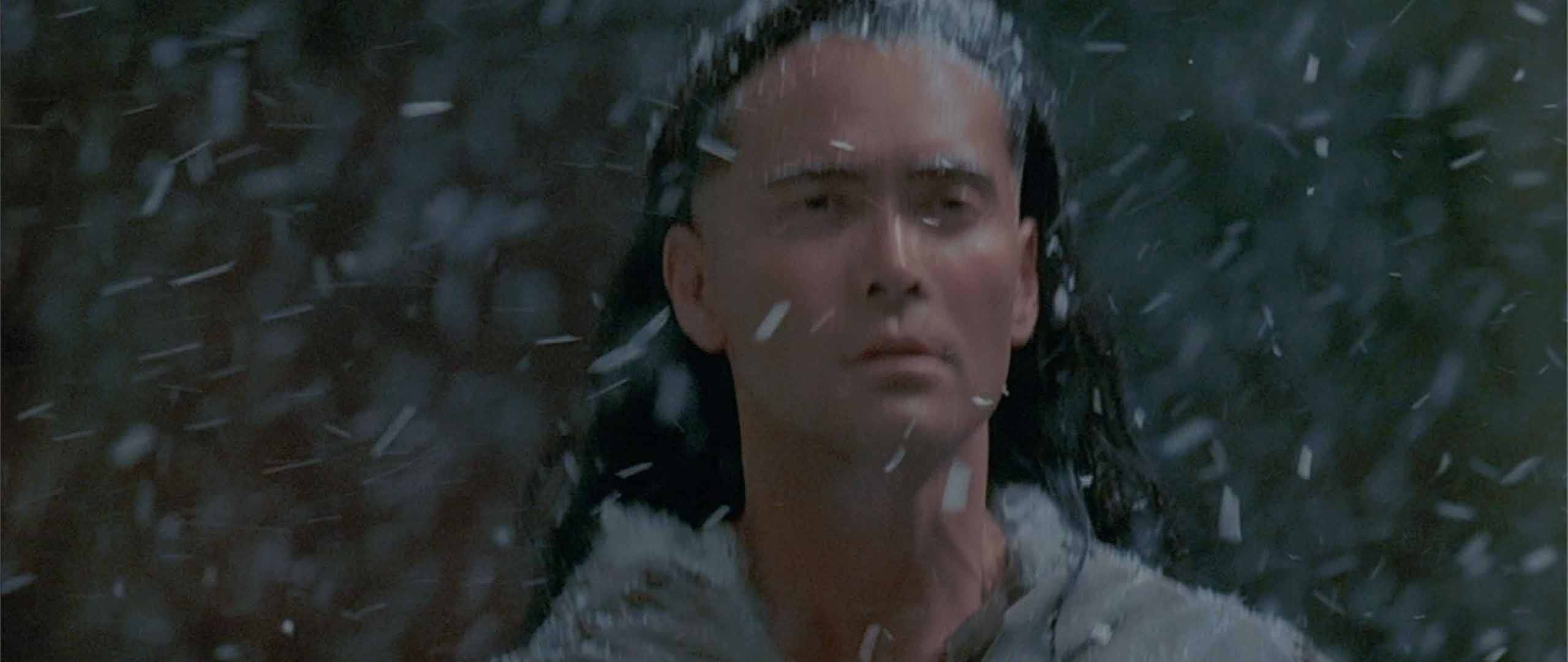
What sticks with me as an Nth-wave Covid sufferer, for instance, is the sequence where the King's master of arms arrives in Gévaudan to settle the problem of the beast once and for all. Fronsac's earnest ongoing inquiry is pushed aside; the master of arms is there to kill a wolf, any wolf, and when he gets one, he orders the Royal Naturalist to taxidermically enhance it into a beast suitable for presenting to the Court. It is time to get back to normal, by fiat, and any future maulings in Gévaudan simply won't count. (Most of this subplot, I think, belongs to the director's cut, and may not have been in the version I originally saw.)
Poor Fronsac! Swashbuckling yet stolid, Le Behan's hero is one of the less compelling figures on the screen, but that creates the necessary space to allow everyone who interacts with him to go suitably nuts: Bellucci's mystic and mystifying courtesan, a sophisticated foreigner in a provincial brothel, with poison as her Chehov's gun; the simultaneously seething and brooding Vincent Cassel, as an impetuous noble with a traumatic injury and a gun loaded with silver bullets; Virginie Darmon as a ripe and deranged peasant lass, whose paired horninesses for sex and for violence might exceed those of anyone else on the scene. Again, as you say, it's all about commitment, and about the greater commitment to letting all of these commitments work together.
Part of what helps bring it off is how fantastic the movie looks. I don't know if this is a kind of myopia particular to my age bracket, like Kurt Andersen declaring in the 2010s that youth fashion hadn't changed at all in 30 years, but it really does seem to me as if action movies hit some sort of visual peak around the turn of the century—The Matrix being the benchmark here—where the problem of how to make things look cool and attractive was essentially solved? A 1980s action flick looked as dated 20 years later as one from the 1960s looked in the '80s, but Brotherhood of the Wolf seems wholly up-to-date to my eyes. The puppetry and CGI of the Beast may occasionally make one's suspension of disbelief wobble a little, but it's no likelier to knock you out of the story than any of Marvel's present-day rush-job computer graphics are. Or am I just seeing what I want to see?
Read Max: I would say the directorial flourish that marks Brotherhood as distinctly of its time is "sudden under-cranking," used most often in the movie's frequent sweeping helicopter shots. The under-crank treatment, a technique also used in music videos and American horror movies of the era, gives a jerky, supernaturally sped-up quality to the motion across the landscape, and communicates an affect I would describe as "spooky/crazy."
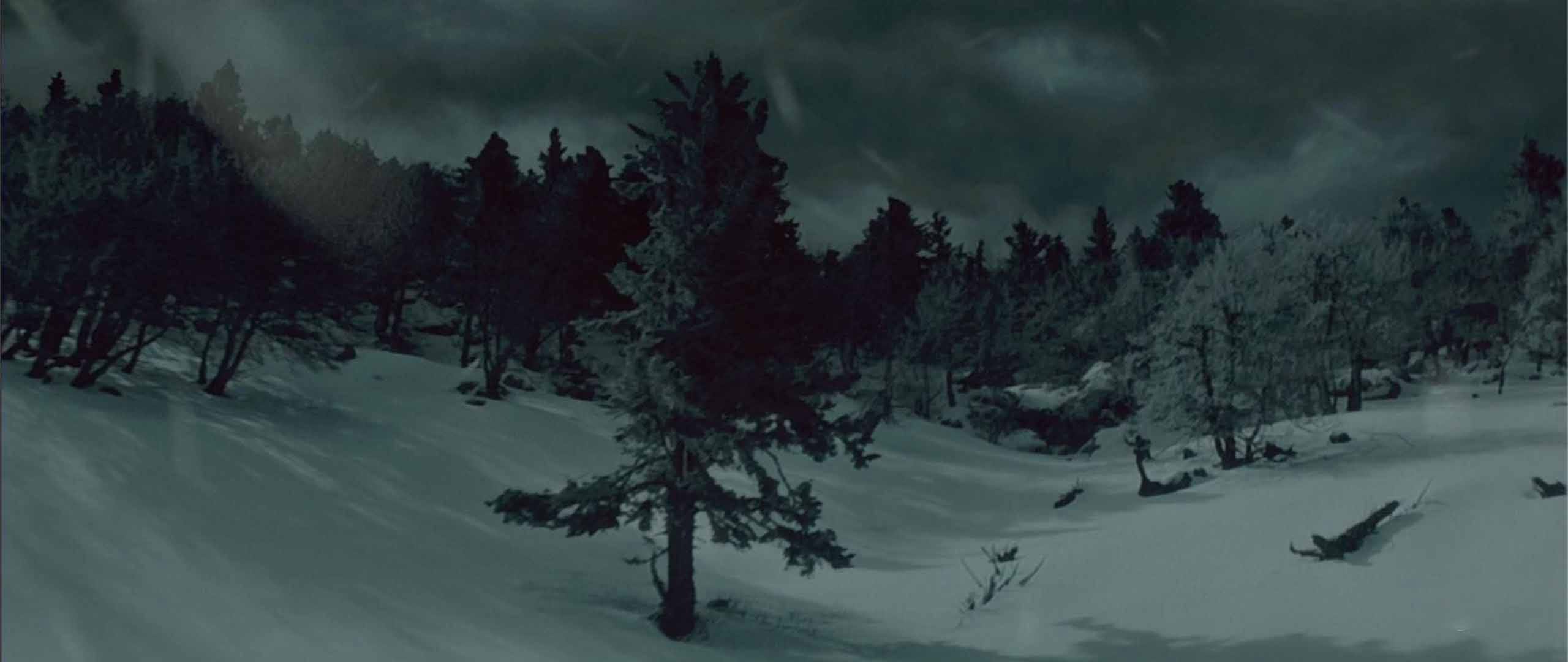
Or maybe the thing that marks it as a period piece is precisely that, as you say, it looks pretty great. There is color and contrast; the images have depth and visual clarity. Someone—several people—lit this movie, like, actually thought about what kind of light should fall on the subjects and background of a shot, and how. It has become cliché for people with memories of the 1990s to over-praise what at the time was seen as middling or basically competent work, and I don't want to overstate the movie's visual quality, but watching something like Brotherhood and comparing it to one of the straight-to-Netflix action movies I am for whatever reason compelled to watch puts me in the mind of that trad Twitter meme about cathedrals. ("My father-in-law is a builder. He is insanely gifted. We were looking at a cathedral together years ago and I asked him what it would cost to build it today. I will never forget his answer… 'We can’t, we don’t know how to do it.'") Only, instead of "cathedrals," "competently shot action movies."
Anyway, yes, besides being a thoughtfully composed movie with intermittent Music Video Tendencies it wouldn't feel much out of place if it came out today. I have to admit that I think its real descendent, or at least the culture-product that I think it comes closest to, is the Assassin's Creed series of video-games, which feature similarly half-conceived anti-Masonic conspiracy theories and anachronistic and inventive violence. Brotherhood is not a particularly video-gamey movie in form, but the unembarrassed cheesiness I was referring to before is much more easily found in American video games than in American movies, and you will receive fewer questions from studios and investors about your bizarre pitch.
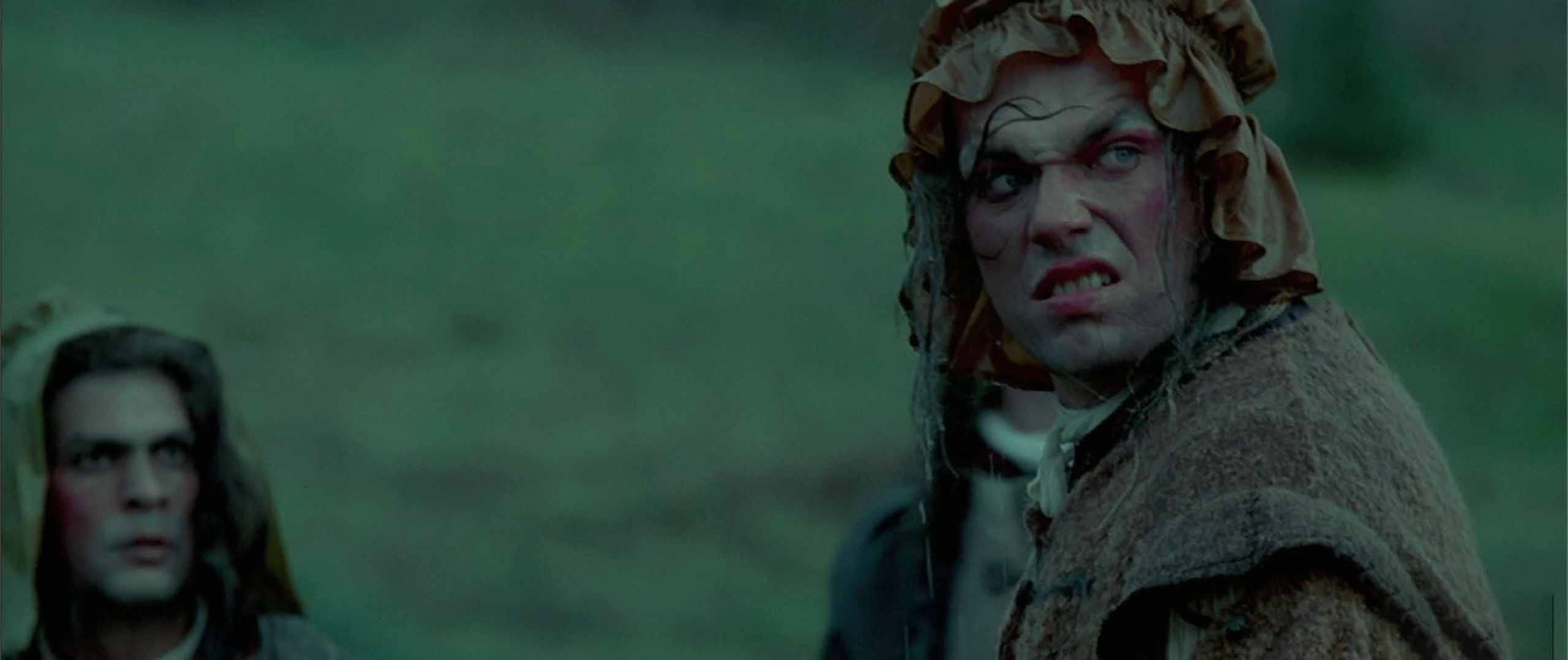
But, wait, about those conspiracies: One of few complaints I have about the movie is that it feels a bit like it pulls its punches at the end, when (spoiler alert, for anyone who still hasn't seen it or doesn't want to be reminded!) Monica Belucci's character reveals that she is a secret agent for the Pope—and he (that is, the Pope) and she are on Fronsac's side against the breakaway radical priest Sardis. Until this moment the movie's heart is clearly with the anticlerical enlightenment (for better and for worse)—Fronsac stands for freedom, tolerance, rationality, and casual sex, all in opposition to the strictures and prejudices of the church—and it seems like both a thematic and narrative letdown for the grand conspiracy of the Beast to be the product of a few bad apples, rather than going all the way to the top. At least in Assassin's Creed 2 you get to fistfight the Pope!
But maybe I'm quibbling. What did you make of the final set of reveals (and the final fight, which features some extremely impressive sword-flipping from Samuel Le Bihan)? Am I asking too much from a movie featuring a brownface sidekick? Should Le Bihan and Mani have gone to Rome to kill the Pope?
Indignity: Well—! It would certainly have been entertaining to see Mani flying-kick his way through the entire Swiss Guard to the papal throne. But as it happens, before rewatching Brotherhood of the Wolf, I had finished reading The Devil's Broker (aka Hawkwood: Diabolical Englishman), Frances Stonor Saunders' spirited recounting of the mercenary wars among 14th century Italian city-states that was recommended by a certain newsletter I subscribe to. So I was very much primed to accept the premise of the Pope fomenting an intrigue, deciding he doesn't like how it's going, and fomenting a counter-intrigue against his original intriguers.
Was it a copout not to have the heroes chase a conspiracy all the way to the top? Enlightenment France has presented a conundrum to the audiences of adventure stories going back to at least Baroness Orczy and her Scarlet Pimpernel. The dashing gentlemen and the ladies in their dazzling frocks are fated to be reactionaries, or at least the reasonably well-deserved targets of revolutionaries; the pure flame of liberty will light the road to terror and tyranny. Everyone is fated to end up being the baddies, one way or the other.
So the movie's conspiracy as unveiled—a collaboration among fanatical Catholic clergy, decadent aristocrats, and downtrodden, Roma-coded outcasts to undermine His Majesty Louis XV—seems intentionally incoherent in its structure and motives, absolving the viewer of having their rooting interests pinned to one side or the other of French history. Even the frame tale of the movie, in which a noble who was friendly to Fronsac is setting it all down as memoir before going out to surrender to a Revolutionary mob, feels designed to reinforce the message that any actual discernible 18th century politics here are moot.
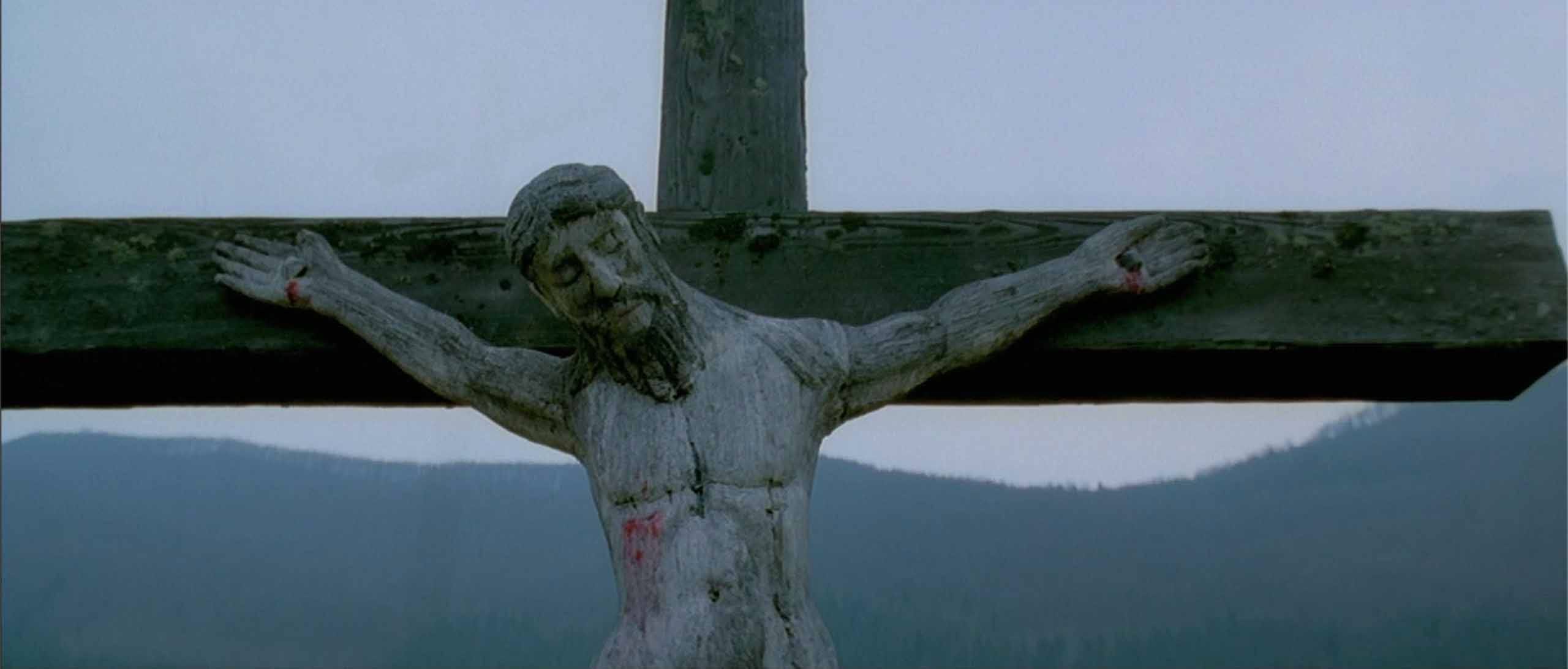
From this point of view, the Pope stays offscreen because His Holiness amounts to a terminal MacGuffin, an arbitrary device to wrap up the plot. Inasmuch as Le Pacte des Loups can be said to have a narrative logic, that narrative logic says the highest power here, both temporally and supernaturally, belongs to Monica Bellucci—whose beauty, the filmmakers understood, is a genuinely uncanny and transcendent thing (hence that transition from nude scene to imposing landscape). Of course she has to be an all-knowing covert operative, carrying Fronsac through the final stretch of the movie with her machinations. Let the Chevalier pair off with an aristocratic ingenue, in their own little love story; Bellucci's Silvia was made for more important things.
Also, practically speaking, I'm not sure how a showdown with [cross-referencing Wikipedia pages] Clement XIII could have been wedged into the plot. There's not a lot of downtime, as is, in the two-and-a-half hours of the director's cut (compare the nearly three hours of petty family squabbling in the most recent James Bond, No Time to Die, known around here as No Time to Pee). We haven't even really talked about the pathetic, possibly colonialism-metaphorical figure of the Beast proper, or the bizarrely inconclusive story of the real-life Beast of Gévaudan, or—well, what else comes to mind before we wrap this up? What other ripe textual elements came spilling out of this cinematic cornucopia at you? Did you know that, per Wikipedia's List of popes, Clement XIII "[p]rovided the famous fig leaves on nude male statues in the Vatican"? Presumably Le Pacte des Loups would have knocked him right out of his little red shoes. Now that the fig leaves are provided by the corporate imperatives of franchise Hollywood, backed by smut-policing post-Tumblr youth, will we ever see this kind of howlingly wolfish entertainment again?
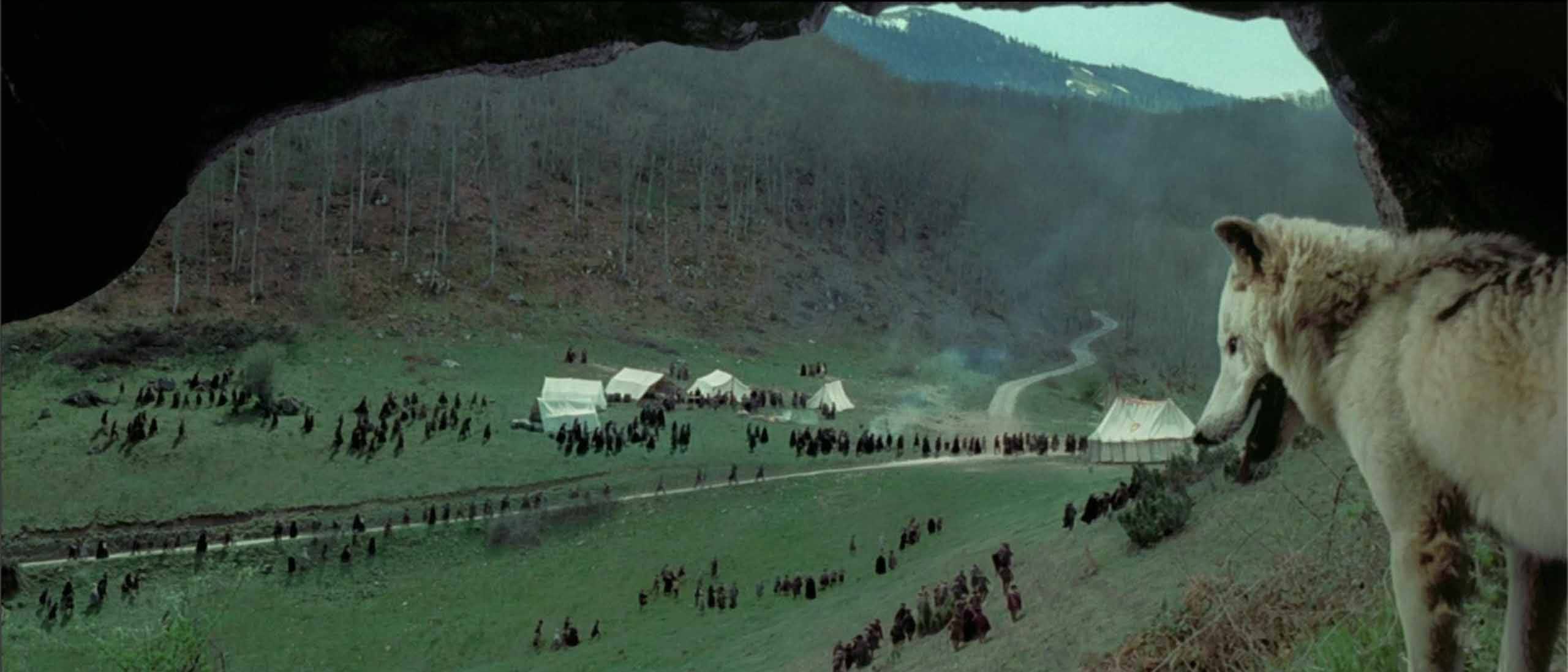
Read Max: Frankly, I feel like we've covered a lot of ground, and I leave it to readers to add their own notes. Anyway, you're right—having Bellucci and the Pope arrive as Fronsac's improbable allies is probably more historically accurate to the nature of Catholic conspiracies and geopolitical maneuvering, and this movie is nothing if not concerned with historical accuracy. If I'm being honest I think I wanted a pope fight less because I was hoping the movie would follow its own philosophical heart and more because it felt like the last place left to go on a gonzo level. Ah, well. Maybe someday someone smart will reboot the series and track Fronsac's new life in America. Or, even better, resurrect Mani and send him and Fronsac across the Alps to Rome—and then beyond!

WEATHER REVIEWS

New York City, September 7, 2023
★★ Arched brownstone windows across the avenue caught the light of the rising sun and threw it heavily against the shutters. On the way out the door to the first day of seventh grade, the sun wasn't yet in the streets and conditions were tolerable. Down in the subway, with half the trains delayed, things were stuffy and miserable. The school mascot wandered down the front sidewalk, past the arrivals, then turned at the corner and popped its head loose to reveal a student's head, sweating heavily. The cafeteria was overcrowded, the seventh-grader reported, and the air conditioner was broken. The school uniform, soaked in sweat, went straight into the hamper as soon as he got home.

EASY LISTENING DEP’T.
INDIGNITY MORNING PODCAST
Indignity Morning Podcast No. 141: The everyday operating machinery of the Times.
Tom Scocca • Sep 8, 2023
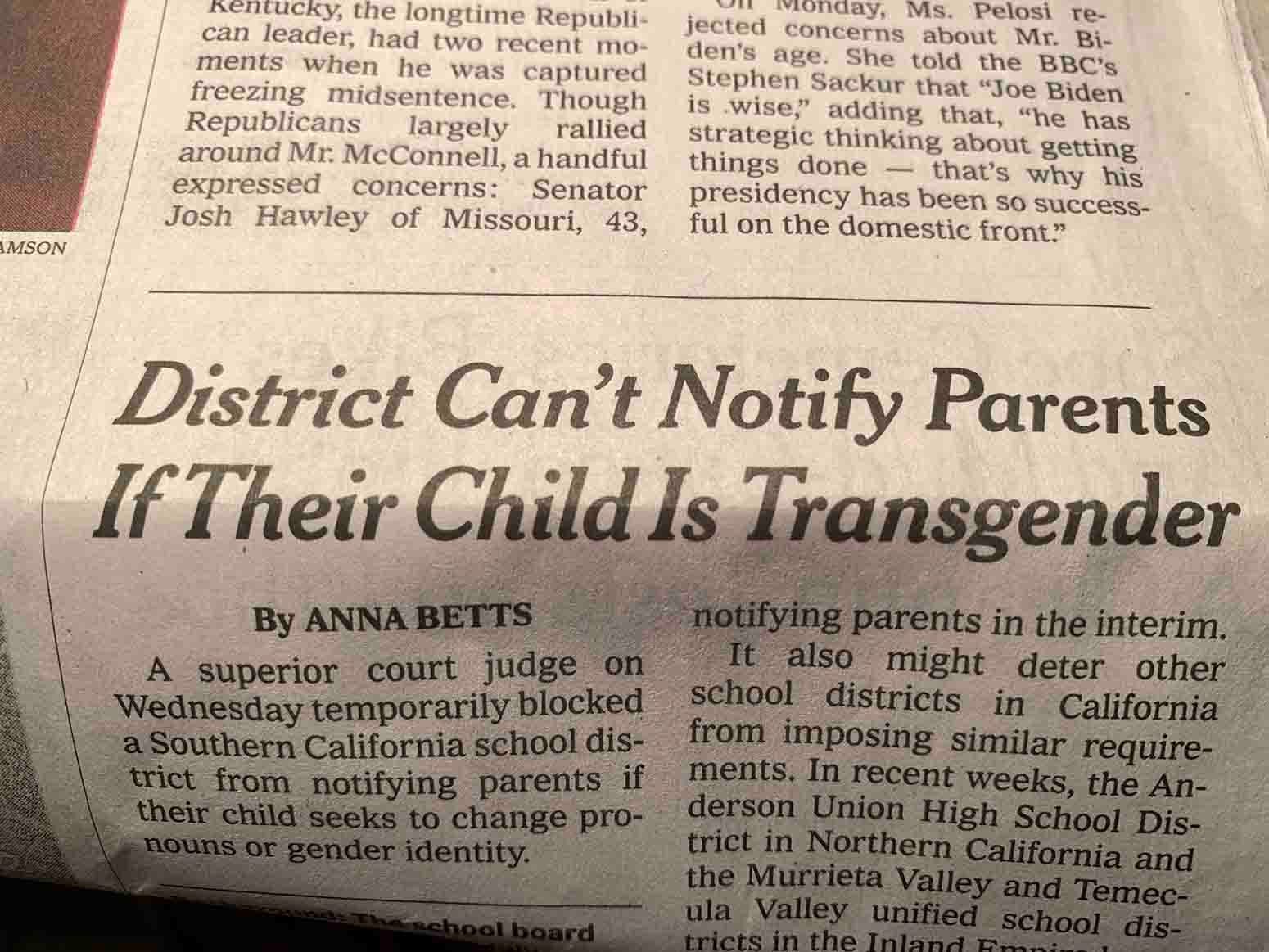
Listen now (7 mins) |
Read full story →

SANDWICH RECIPES DEP’T.
WE PRESENT INSTRUCTIONS for the assembly of select sandwiches from The Altrurian Cook Book: Favorite Recipes Contributed by the Wives and Daughters of Troy, by the Troy Altrurian Club, Troy, N.Y. Published in 1910, this book is in the Public Domain and available at archive.org for the delectation of all.
MIXED CHEESE SANDWICHES.
Take equal parts of Neufchatel or some light cream cheese and Roquefort and pound and mix them well together. When they are of the consistency of a good thick paste add a few drops of tabasco sauce and mix again. Spread on unbuttered bread.
NUT SANDWICHES.
To one cup of English walnuts, chopped fine, add a pinch of salt and sufficient fresh cream cheese to make a thin paste when well mixed. This should be made as late as possible before serving, as it will otherwise get oily and strong. Spread on fresh unbuttered bread.
NASTURTIUM SANDWICHES.
Spread thin slices of diamond shaped bread with mayonnaise dressing; and put together with nasturtium leaves and seeds chopped fine.
—Mrs. J. H. Carr.
OLIVE SANDWICHES.
Scald and cool twelve large olives, stone them and chop very fine. For a sauce take a teaspoon ful of mayonnaise or light dressing, and mix with it the same amount of cracker dust. Mix this with the olives and spread on thin slices of slightly stale bread from which the dry crusts have been carefully trimmed. Cover with a dampened cloth if they are not served at once.
PEANUT SANDWICHES.
Roll salted peanuts, from which all little brown hulls have been removed, between a towel or pieces of brown paper, then add a little melted butter and spread between bread prepared the same as for chopped ham sandwiches. Salad dressing may be substituted for melted butter if desired.
—Mrs. J. W. D.
PIMENTO SANDWICHES.
Take about equal amounts of pimentos, cream cheese, and hard boiled eggs. . Grind them and add enough good salad dressing and cream to make a paste that will spread easily. Spread on thin slices of unbuttered bread and put together with small lettuce leaf between. Boiled ham or nuts may be added to above.
If you decide to prepare and attempt to enjoy a sandwich inspired by this offering, kindly send a picture to us at indignity@indignity.net.

MARKETING DEP'T.
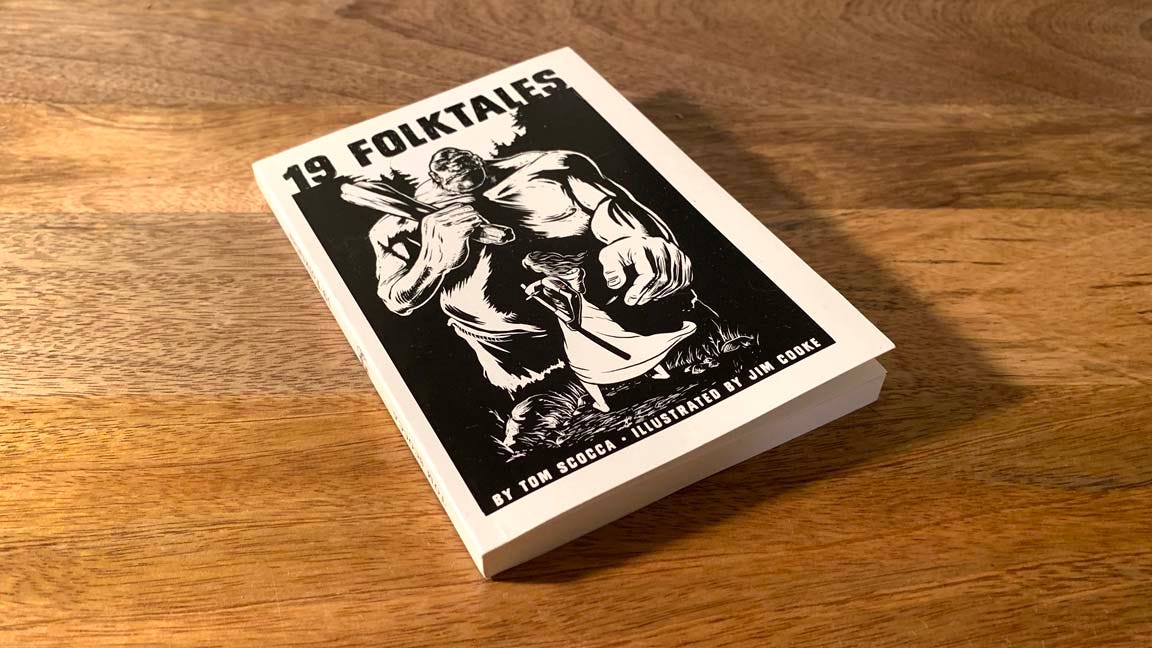
19 FOLKTALES collects a series of timeless tales of canny animals, foolish people, monsters, magic, ambition, adventure, glory, failure, inexorable death, and ripe fruits and vegetables. Written by Tom Scocca and richly illustrated by Jim Cooke, these fables stand at the crossroads of wisdom and absurdity.
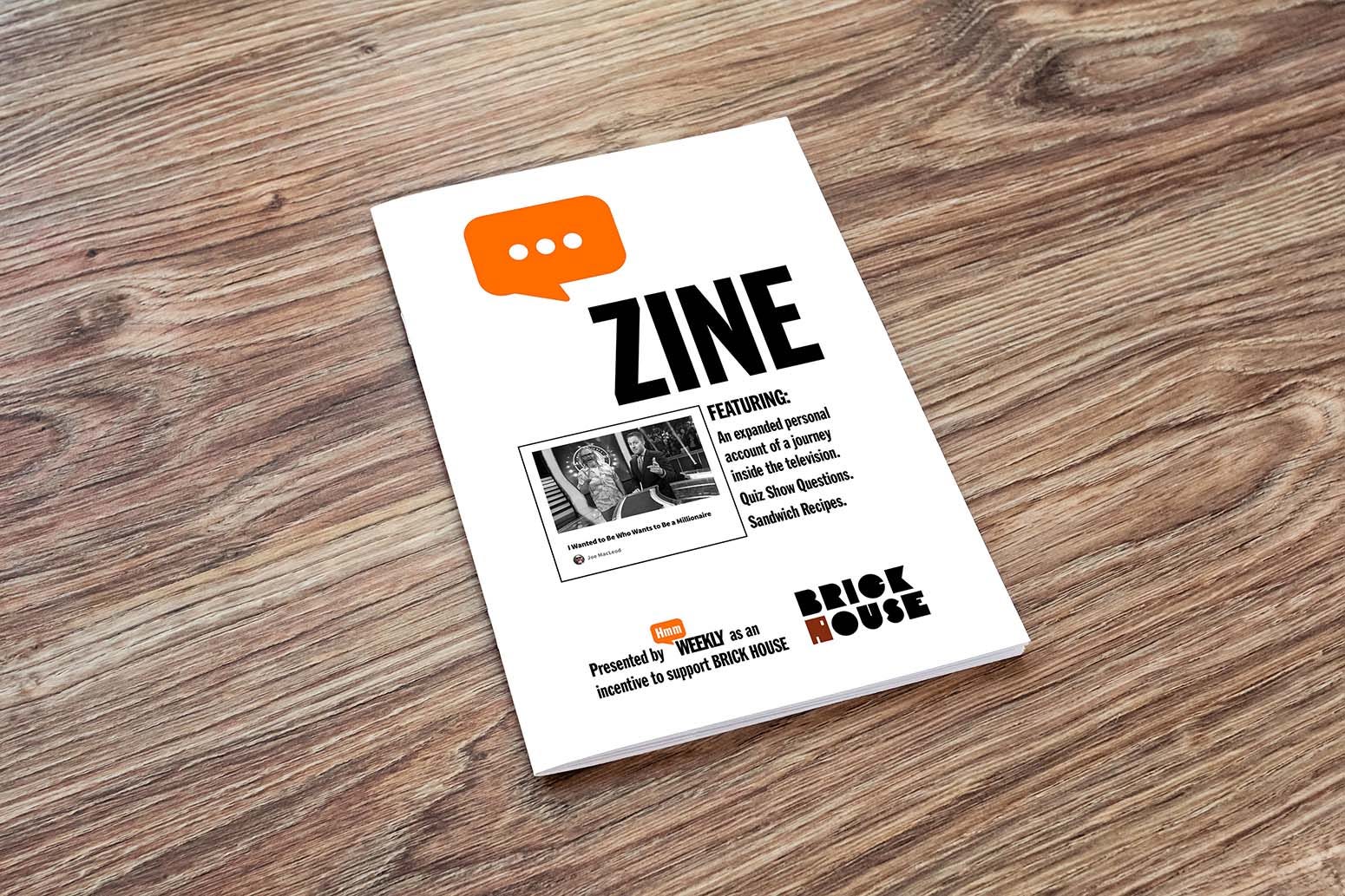
HMM WEEKLY MINI-ZINE, Subject: GAME SHOW, Joe MacLeod’s account of his Total Experience of a Journey Into Television, expanded from the original published account found here at Hmm Daily. The special MINI ZINE features other viewpoints related to an appearance on, at, and inside the teevee game show Who Wants to Be A Millionaire. Your $20 plus shipping and tax helps fund The Brick House collective, a Publishing Concern featuring a globally diverse set of publishers doing their own thing, with interesting items and publications available for purchase at SHOPULA.
Thanks for reading INDIGNITY, a general-interest publication for a discerning and self-selected audience. We depend on your support!




